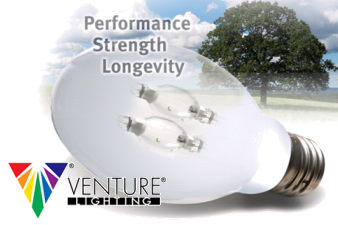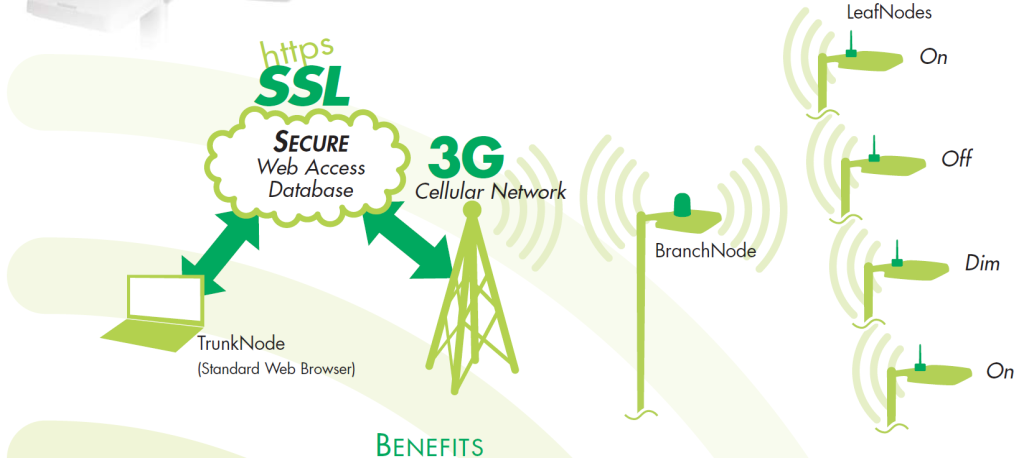 Like any business, auto dealerships and property managers of multi-use retail centers with parking lots have a variety of costs they must address in order to maintain normal operations. One of the biggest costs is electricity for lighting. According to the Small Business Administration, car dealerships use more energy per square-foot than a typical office building, and a car dealership’s lighting costs can be as much as 50 percent of its overall energy use.
Like any business, auto dealerships and property managers of multi-use retail centers with parking lots have a variety of costs they must address in order to maintain normal operations. One of the biggest costs is electricity for lighting. According to the Small Business Administration, car dealerships use more energy per square-foot than a typical office building, and a car dealership’s lighting costs can be as much as 50 percent of its overall energy use.
Lighting is responsible for 20 to 25 percent of overall U.S. energy consumption, with 50 percent of that coming from industrial and commercial lighting, as outlined by the Energy Efficient Lighting Association. Because lighting costs are such a large budget item for auto dealerships, each dealer has good reason to reduce its energy use and save money and add value for employees and customers.
Making a comprehensive decision
Making a lighting choice is a complex one for auto dealerships that requires consideration of a wide array of factors. First, there is the consideration of lighting manufacturer. Which lighting technology choice will best showcase the product and draw customers onto the lot? Does your choice improve the customer experience?
Then, there is the cost savings and upfront costs. How long will a retrofit or new lighting system take to pay itself off? What are the associated maintenance costs? How long will each bulb last? What is the effect on profitability? Which products and technologies are eligible for rebates and tax advantage. Each lighting technology and manufacturer choice offers advantages and disadvantages.
Your options
From induction fluorescent bulbs to light emitting diode (LED) lamps to high intencity discharge (HID), the market has no shortage of energy efficient bulbs. As the newest and fastest evolving technology, LEDs are getting all the press. But LEDs are not always the best choice, especially when considering profitability and bottom-line ROI. Replacing the market standard 1000 watt metal halide bulbs with LED fixtures will create an energy savings between 50 percent and 80 percent, depending on the location, electricity rates and the facility’s lighting needs. Such bulbs usually boast up to 50,000 hours of operational life until significant lumen depreciation. The downside to LED technology is its high upfront cost.
Induction lighting offers the longest bulb life of all lighting technologies, featuring lifetime claims up to 100,000 hours of operating life. These lights are considered by some to blend the best of LEDs with the best of fluorescent lighting all in one bulb. While induction fluorescent fixtures operate at just 400 watts – generating significant energy savings of 40 to 75 percent – and cost about half as much as an equivalent LED fixture, induction lights still cost, on average, $200 more than metal halide lamps. And in comparison to LEDs, fluorescent induction lights offer a better color rendering, with upwards of 80 CRI per fixture. However, if the fixture cannot cool down, these lamps are susceptible to overheating, in which case they will shut off, jeopardizing parking lot safety.
Metal halide vs. metal halide?
 Because metal halide lamps have dominated the industry for so long, many auto dealers think that these lamps are outdated, or that they cannot generate significant energy savings. Very often, people think that LEDs are the only way to generate energy savings. However, innovations in metal halide lamps have significantly improved both their light output and their energy profile. A metal halide/metal halide retrofit by LeafNut Venture can generate 50 to 60 percent energy savings immediately at a quarter of the upfront cost (compared to LEDs) by replacing conventional 1000 watt HID bulbs with 575 watt Natural White bulbs, as opposed to the 700 watt pulse start metal halide bulbs. Because of the low costs of both the fixtures and the installation, auto dealerships can expect to recapture their investment in less than three years.
Because metal halide lamps have dominated the industry for so long, many auto dealers think that these lamps are outdated, or that they cannot generate significant energy savings. Very often, people think that LEDs are the only way to generate energy savings. However, innovations in metal halide lamps have significantly improved both their light output and their energy profile. A metal halide/metal halide retrofit by LeafNut Venture can generate 50 to 60 percent energy savings immediately at a quarter of the upfront cost (compared to LEDs) by replacing conventional 1000 watt HID bulbs with 575 watt Natural White bulbs, as opposed to the 700 watt pulse start metal halide bulbs. Because of the low costs of both the fixtures and the installation, auto dealerships can expect to recapture their investment in less than three years.
Modern metal halide bulbs come with an operational life ranging between 26,000 and 40,000 hours, depending on your product selection. In particular, a Ceramic Metal Halide (CMH) technologies from Venture Lighting come in Natural White, and render colors similar to sunlight at color temperature of 5000K with color rendering exceeding 90 CRI. These lamps produce a quality of light that surpasses both LEDs and induction lights. The Uni-Form 4000K Pulse Start Metal Halide lamp offers similar light quality with 40,000 hours of life, shattering the misconception that metal halide lamps burn out quickly.
The benefit of such strong light increases an auto dealer’s ability to showcase his or her products. Adding to the cost savings, Venture’s wireless controls and dimming system (called LeafNut), each fixture can be dimmed independently by up to 50 percent, saving energy with little discernible difference in the quality of lot lighting. LeafNut also offers additional security to your lot with occupancy sensors that increase light output when someone passes through your lot at night.
Leveraging lighting controls
A typical auto dealer lot employs electrical equipment such as photocells and time clocks in conjunction with a circuit box. Here, maintenance workers or sales people switch on runs of lights using a circuit breaker. While this gives auto dealerships some control over their lighting, they still cannot turn on and off, or dim, specific lights. Rather, dealers can turn on “runs” of lights, consisting of multiple fixtures. This is inefficient, and photocells and time clocks break often, requiring frequent maintenance. Plus, maintenance people and auto dealer owners have no way of knowing if there are problems with individual lights or if they are working properly.
 However, Lumenistic’s lighting control system known as LeafNut is completely wireless, and requires no additional electrical equipment that could be prone to breakdowns. Instead of “runs” of lights, the LeafNut Venture’s light control system allows users to monitor and interact with individual fixtures, determine custom groupings that are completely customizable. Not only can reports be generated for each fixture concerning its energy consumption and performance, but each fixture sends messages concerning its status – on, off, dim – as well as if there is a problem with the bulb or ballast. All of this information can be accessed online from any computer or smartphone, and lights can be turned on and off from a web browser. LeafNut specifically lays out each facility’s light network on a Google maps image. Hovering over each light icon gives a user the status and performance data of that fixture, empowering maintenance staff and improving a business’s bottom line.
However, Lumenistic’s lighting control system known as LeafNut is completely wireless, and requires no additional electrical equipment that could be prone to breakdowns. Instead of “runs” of lights, the LeafNut Venture’s light control system allows users to monitor and interact with individual fixtures, determine custom groupings that are completely customizable. Not only can reports be generated for each fixture concerning its energy consumption and performance, but each fixture sends messages concerning its status – on, off, dim – as well as if there is a problem with the bulb or ballast. All of this information can be accessed online from any computer or smartphone, and lights can be turned on and off from a web browser. LeafNut specifically lays out each facility’s light network on a Google maps image. Hovering over each light icon gives a user the status and performance data of that fixture, empowering maintenance staff and improving a business’s bottom line.
Because of the number of factors to take into consideration, the commercial lighting design best suited for your business location might best be determined by an experienced lighting consultant such as Lumenistics.
Oops! We could not locate your form.
